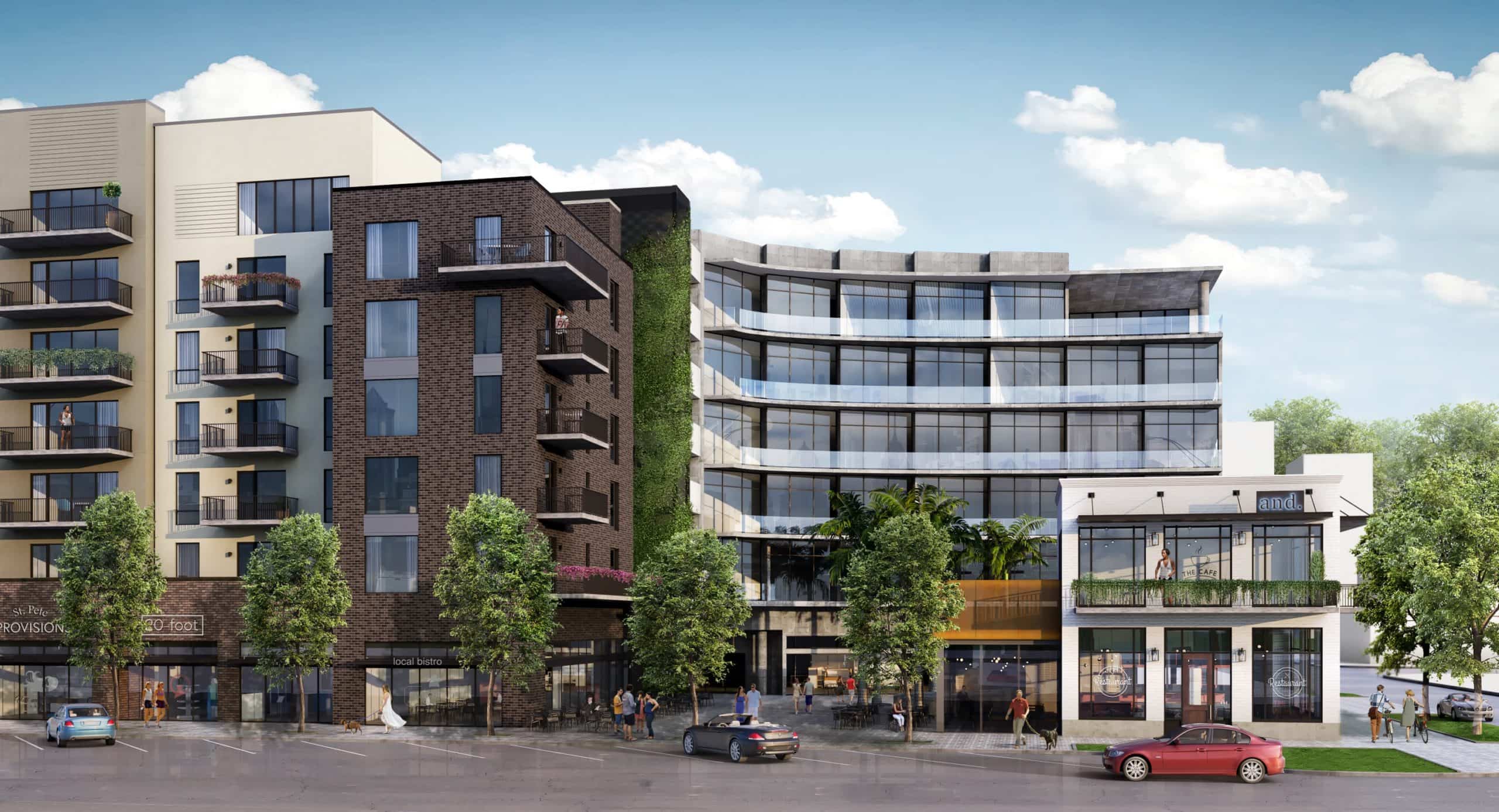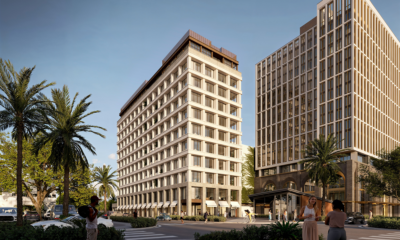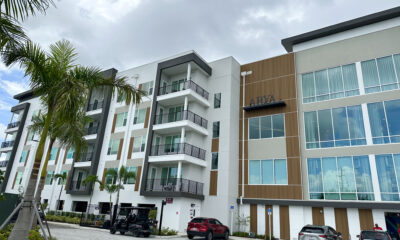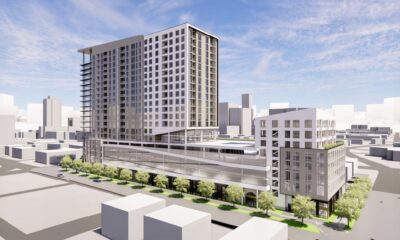Here’s what happened to the workforce apartments proposed for Edge Central

When St. Petersburg City Council member Brandi Gabbard got her first look at a term sheet for the EDGE Central project, the planned $70 million mixed-use development that will replace the former police headquarters at 1300 1st Ave. N., one of her first questions was, “What happened to the workforce housing?”
The initial proposal from EDGE Central Development Partners called for 104 workforce housing units, designed for households earning between 80 percent and 120 percent of the area median income. That shrank to 30 units after negotiations with the city. At the same time, the amount of office space and parking for the development increased.
A discussion Thursday between Gabbard and other city council members, and Alan DeLisle, the city’s economic development director, touched on a key issue about growth in St. Petersburg and elsewhere — how to create new office space and jobs while ensuring there is housing that is affordable.
“We can continuing creating jobs all day long, but if we don’t have a place for those people to live we are losing out,” Gabbard said.
City Council member Gina Driscoll said it’s not an “either-or” debate.
“We have to create homes that are affordable for more people, but the other side is that we have got to find ways to increase incomes in our area, so that people can get a paycheck that makes ends meet and allows them to save to buy a home,” Driscoll said. “This helps us move toward that goal.”
Losing deals
The City Council did not take a vote at Thursday’s meeting on the term sheet with EDGE Central. That will come at a later date.
In general, council members were supportive of the EDGE Central proposal, which includes 100,000 square feet of Class A office space, a 600-space parking garage with 400 public parking spaces, 60 market-rate condos and 30 workforce rental housing units, 22,000 square feet of retail space and an outdoor public plaza.
Related story: ‘Local boys’ take on major development in the EDGE District
The city is selling the property to EDGE Central for $6.4 million. If the developers tear down the old structure themselves, $1 million will come off the purchase price.
The city will loan the developers $2 million, through a 20-year mortgage, to help with the workforce housing component. The city plans a public-private partnership with the developers on parking, funding about $8 million for 400 spaces that will be available to the public.
The city shaved about $1.2 million from the property’s appraised value, because of the more than 50 percent increase in office space, which economic developers say is needed.
“Tampa is building a lot and we have to stay competitive,” DeLisle said. “We’re losing deals because we don’t have office space.”
There were tradeoffs for increasing the office space, however, and one of them was a decrease in workforce housing units.
Funding for those units proved challenging, said Jay Miller, president of J Square Developers and a principal in EDGE Central Development Partners. There’s no state or federal funding or workforce housing, and most of the deals that get done are tax credit arrangements for households earning 60 percent or less of the area median income.
EDGE Central initially planned to seek HUD financing for the 104 workforce units, but that’s a lengthy process with an uncertain outcome, DeLisle said.
“When we first sat down with city staff and looked at the 104 units, and showed them what kind of financial support was required in order to develop [those] units, they were startled,” Miller said. “We also talked about the fact that at this particular location, the housing units require parking in parking structures, which is an expensive way to develop parking. The cost of developing the units here, as opposed to maybe in another neighborhood where land is less expensive, was higher. So in our discussions with the city about where the priorities were and where the financial support was, we concluded on this mix, which increased the size of office and reduced the amount of workforce housing, but retained the workforce housing, which is important.”
It’s not fair to put an expectation or burden on one project to solve a huge, city-wide problem of affordable housing, said City Council member Darden Rice.
“The other side of the equation is being able to bring jobs and offer better-paying jobs,” Rice said. “We’re not going to be able to build our way out of the affordable housing crisis. The other side is focusing on job creation as well.”
“A good job solves a lot of problems,” said City Council member Ed Montanari, who has been elected Council chair for next year.
For Gabbard, it’s a matter of balancing priorities.
“At some points in time, we come to a crossroads where your priorities in economic development and the priorities of neighborhood affairs may not be the same. I understand on this particular project, the economic development piece won out,” Gabbard said. “You talk about losing deals because we don’t have office space. My concern fundamentally is what kind of human capital are we losing in our city every time someone cannot afford to live here. I think that’s the true balancing act. We are going to have to make hard decisions about going forward.”
Still, Gabbard said she expected to vote to approve the plan, because the positives outweighed the negatives.
EDGE District weighs in
The site is critical to the EDGE District, said Barbara Voglewede, executive director of the EDGE Business District Association.
The EDGE District — the area bounded by 1st Avenues North and South and by Dr. Martin Luther King Jr. and 16th Streets — has been a hot spot for new development, including a mixed-use retail, hotel and co-working project, called The Edge Collective, from PTM Partners, and many smaller projects.
“We’ve been fortunate to have this revitalization but we’re hoping for smart growth, and this site is a lynchpin to smart development to make that happen,” Voglewede said.
The parking is especially key, she said.
“During this next year we anticipate several hundred parking spaces disappearing, going off line for all the new developments coming forward. So it’s even more important that this site contain the parking that will ensure the success of our business and residential district,” Voglewede said.
The term sheet calls for 100 parking spots to be reserved for daily parking for shoppers, restaurant patrons and other EDGE District visitors, said Evan Mory, the city’s transportation and parking management director. It also ensures that monthly parkers, primarily people who work in the EDGE District, will be able to park in the garage all the time, and not be forced to pay extra on days where there are sports or other events at nearby Tropicana Field, Mory said.
The EDGE Business District Association also will have an office in the new development, ranging from 800 to 1,000 square feet.








Von Aulock Von Aulock
December 16, 2019at9:44 am
Thank you, Councilwoman Gabbard for keeping our collective eyes on the prize.